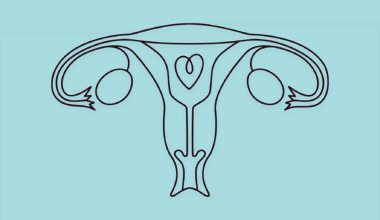Detective mode: activated! Tracking your fertility is part science, part sleuthing, and occasionally part comedy of errors. These terms will transform you from fertility freshman to forecasting pro. Grab your magnifying glass—your body is dropping clues everywhere!
Basal Body Temperature (BBT): Your body’s resting temperature, which rises slightly (about 0.2°F/0.1°C) after ovulation due to progesterone’s effect. The world’s subtlest thermometer game where the tiniest change means something huge is happening.
Cervical Mucus: The discharge that changes throughout your cycle in response to hormones. Its texture and consistency provide valuable clues about your fertility status. Yes, we’re asking you to become a mucus detective—perhaps the least glamorous CSI spinoff ever.
Cervical Position: How your cervix changes in height, firmness, and openness throughout your cycle. Requires you to become your own gynecologist with DIY internal exams. Talk about getting in touch with yourself! Not exactly first-date conversation material.
Transvaginal Ultrasound: An imaging technique used to monitor follicle development and uterine lining thickness during fertility assessment and treatment. Like getting a backstage pass to see what’s actually happening inside your reproductive organs.
Fertility Monitor: Electronic devices that track hormone levels through urine tests to identify fertile days. Like having a tiny scientist in your bathroom analyzing your pee with the dedication of a wine connoisseur examining a rare vintage.
Charting: The practice of recording fertility signs daily (BBT, cervical mucus, etc.) on paper or apps to identify patterns and predict ovulation. Essentially turning your reproductive cycle into a data science project – who said spreadsheets couldn’t be sexy?
Ovulation Predictor Kits (OPKs): Home tests that detect the LH surge in urine, indicating ovulation is approaching. The pregnancy test’s eager little cousin that can’t wait to tell you it’s baby-making time. “Pee on this stick daily” becomes your new hobby.
Fertile Score/Fertility Index: Numerical ratings used by some tracking apps to estimate daily fertility potential. Your reproductive potential boiled down to a five-star rating system – like Yelp, but for your ovaries. “Today’s egg quality: 4.5 stars, would recommend!”
Symptothermal Method: A comprehensive approach to fertility awareness combining BBT, cervical mucus observations, and other fertility signs. For the overachievers who aren’t satisfied with just one tracking method. It’s the fertility equivalent of wearing both a belt AND suspenders – because your reproductive system deserves maximum security.
MYTH BUSTER:
Temperature rise = "Quick, let's make a baby NOW!"
That BBT spike? It's more "ovulation obituary" than "fertility forecast." By the time your temperature rises, your egg is already halfway to retirement. It's like showing up to a concert after the band has left the building. Your BBT is essentially your body's way of saying "Thanks for your interest in getting pregnant! Unfortunately, the egg you're trying to reach has already moved on to new opportunities."
THE TAKEAWAY: Use BBT to confirm ovulation happened (great for pattern tracking!), but rely on cervical mucus or OPKs to predict when it’s actually coming. Otherwise, you’re essentially bringing an umbrella after the storm has passed.
Remember: If BBT is your only tracking method, you’re reading yesterday’s news in tomorrow’s paper!
Chart curious? Our complete guide takes tracking from confusing to empowering! Beyond apps and thermometers, we’ll show you how to interpret your unique patterns and actually use that data effectively. You’ll learn which tracking methods match your lifestyle (because some of us aren’t waking up at exactly 6 AM every day) and when to trust technology versus your own observations. Whether you’re a spreadsheet enthusiast or a casual tracker, our TTC but make it CHILL eBook transforms overwhelming fertility data into actionable insights. Grab your copy here and upgrade from tracking novice to fertility pattern pro!






